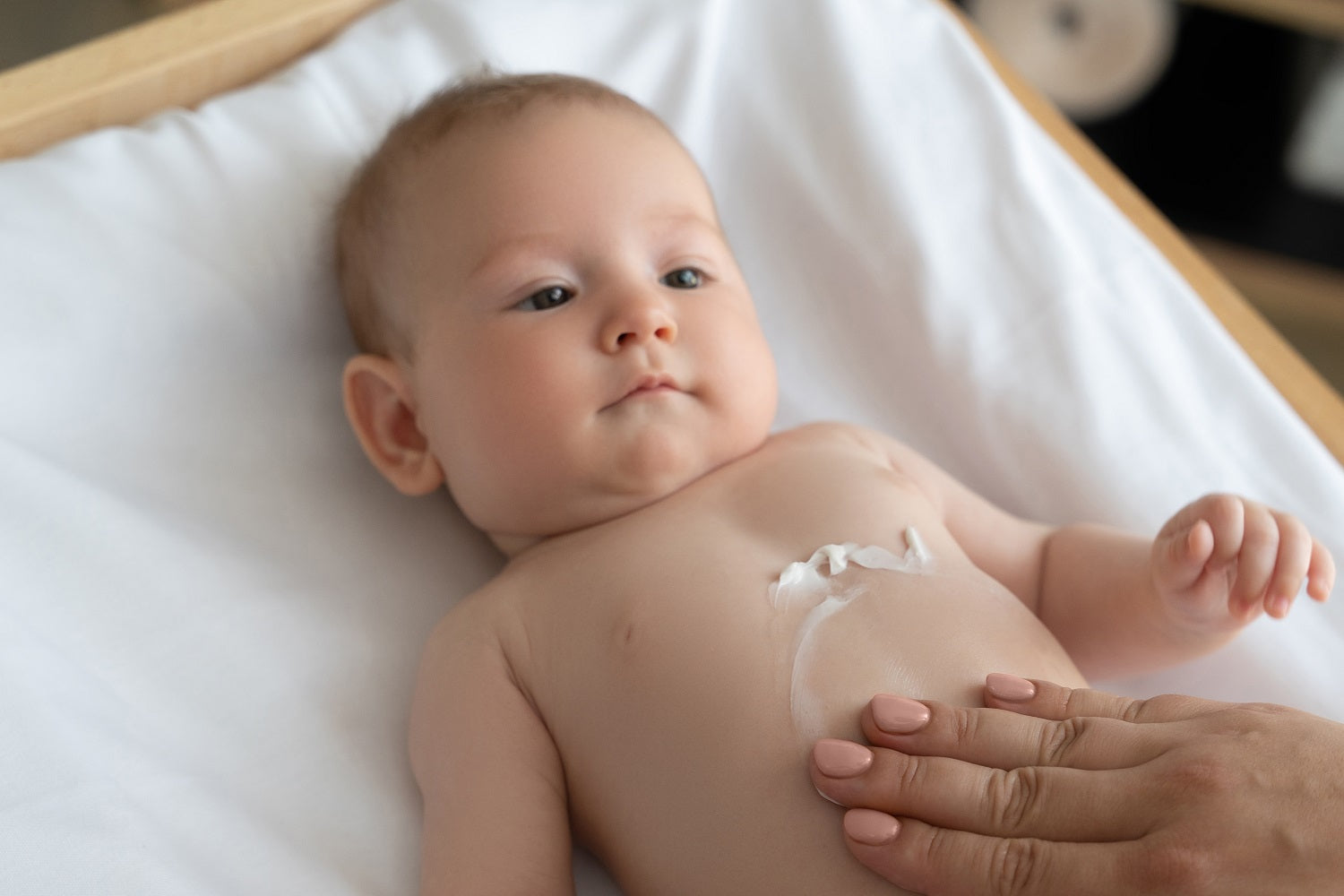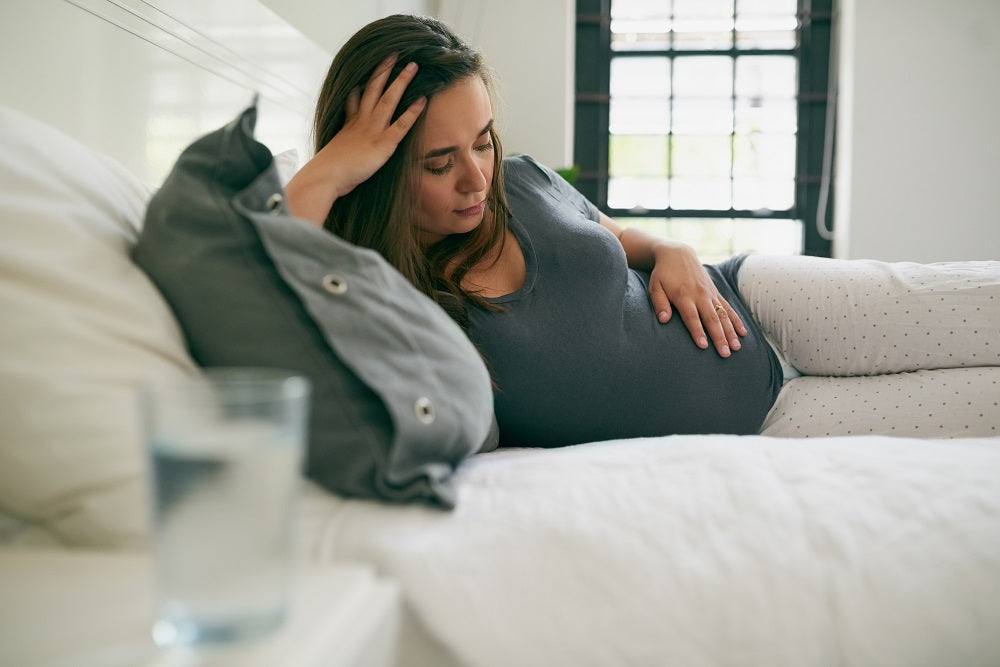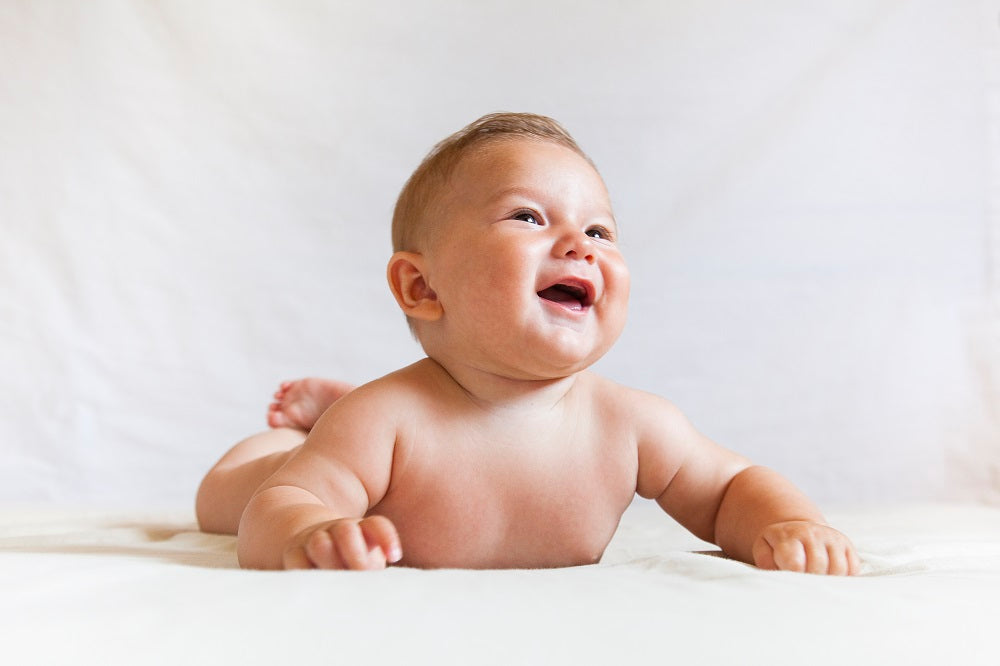It’s common for parents to feel concerned when they notice newborn skin peeling, especially during the Australian autumn when the weather can be dry. Don’t worry, skin peeling on newborns is a natural process that most babies go through as they adjust to the outside world. In the autumn months, the dry air can exacerbate newborn dry skin, but with the right care, you can keep your baby’s skin comfortable and healthy.
1. What Causes Newborn Skin Peeling?
Baby skin is thinner and more delicate than adults', making it more susceptible to environmental changes. In the first few weeks after birth, babies are still adjusting to the outside world, and their skin undergoes a natural process of shedding. Newborn skin peeling typically occurs during the first week of life and can affect different areas of the body, such as the hands, feet, face, and scalp.

Here's a closer look at why this happens:
G'day to Dry Air (Amniotic Fluid Transition): For yonks, your little one's been floatin' around in amniotic fluid inside you. Once they're out in the world, the air is much drier, which naturally leads to the top layer of their skin dryin' out and flakin' off. This usually kicks off within the first 24 hours and can last for about 1 to 2 weeks.
New Skin on the Block (Skin Metabolism): Newborns are growin' like weeds, and their skin cells are renewin' pretty fast. Because the outer layer (the epidermis) isn't fully mature and not stuck on super tight to the layer underneath (the dermis), it's easy for it to flake off as new skin cells come through. This is just part of their skin developin' properly and nothin' to stress about – usually sorts itself out in 1 to 2 weeks.
Farewell, Vernix (Vernix Caseosa Shedding): When your little tacker arrives, they often have a whitish, waxy coating called vernix. This stuff protects their skin in the womb. After birth, this vernix naturally peels away, which can look like skin peeling. No need to do anything special; it'll generally disappear in about 2 weeks.
Needin' the Right Bits (Micronutrient Deficiency): This is less common, but if your little one isn't gettin' enough of certain nutrients, like zinc, it can affect their skin health and make peeling worse. If you're worried, have a chat with your doctor about their nutrition. Recovery time can vary, from a week or so to over a month.
Somethin' Else Goin' On (Pathological Peeling): Sometimes, peeling skin can be a sign of a medical condition like eczema or exfoliative dermatitis. These can cause red, flaky patches over larger areas. If you notice this, it's important to get your little one seen by a doctor straight away for proper treatment. Recovery time depends on the condition, ranging from a week to a few months.
Climate environment: In the Australian autumn, the weather cools and the air becomes drier, especially when indoor heating is used. This can make a newborn’s skin more prone to dryness and peeling. Autumn’s drop in humidity and temperature fluctuations can lead to skin dehydration, which often causes flaky skin on infants.
2. Common Areas of Peeling
Skin peeling on newborns often appears in the following areas:
- Hands and feet: These are the most common places to see skin peeling on hands and peeling skin feet and hands, particularly when the weather is dry. Peeling skin infant hands and feet are very sensitive, so they often become dry and begin to shed.
- Face and scalp: The skin on your baby’s face is more delicate and may experience redness, dryness, or peeling, especially in cooler months. Dry peeling face can also occur if the skin gets excessively dry.
- Back and chest: Some babies may experience mild peeling on their backs or chests as well, resulting in newborn flaky skin in these areas.

3. How to Care for Baby's Skin
While skin peeling in infants is typically temporary, the right care can help alleviate any discomfort and support the natural healing process. Here are a few tips for caring for your baby’s skin during the autumn months:
Moisturise Regularly:
In Australia’s dry autumn air, keeping your baby’s skin hydrated is key. Use a gentle, fragrance-free moisturiser designed for babies. Look for products with natural ingredients like Australian macadamia oil or coconut oil, which are known to help soothe and hydrate delicate skin. Moisturiser for newborns can also prevent newborn skin dryness.
Gentle Bathing:
When bathing your baby, make sure to use lukewarm water instead of hot water, as hot water can strip the skin of its natural oils. Use a mild, tear-free baby wash that’s free from harsh chemicals and fragrances to prevent irritation.
Dress Baby in Soft, Breathable Fabrics:
As the weather cools, make sure your baby is dressed in soft, cotton clothing to avoid irritation. Avoid synthetic fabrics that might cause overheating or rubbing against the skin.
Apply Thick Creams for Extra Moisture:
After each bath, apply a thicker layer of moisturising cream to lock in hydration. If the peeling is more severe, consider using a richer ointment to provide extra protection and nourishment. This will help manage dry skin patches on infants.

Avoid Over-Moisturising: While hydration is key, applying too much product too often can sometimes irritate the skin. Follow the product instructions and observe how your baby's skin responds.
Can breast milk help with newborn dry skin?
Some parents find that applying a small amount of breast milk to areas of dry or peeling skin can be beneficial. Breast milk contains natural moisturizing properties and antibodies that may help soothe and protect the delicate skin. Gently dab a few drops onto the affected area and allow it to air dry. While not a substitute for regular moisturising, it can be a gentle addition to your baby's skincare routine
4. Sun Protection
Even in autumn, sun protection is crucial. Australia’s sun remains strong year-round, and your baby’s skin is highly sensitive. Prolonged sun exposure can lead to sunburn and exacerbate peeling.
Use Baby-Safe Sunscreen:
Choose a baby-friendly sunscreen that is free from harmful chemicals. Make sure to reapply every two hours, especially when you’re outdoors.
Dress Baby in Sun Protection Gear:
During outings, dress your baby in long sleeves, a wide-brimmed hat, and sunglasses for protection from the sun. Opt for baby clothes with built-in UPF protection if possible.
Seek Shade:
Limit your baby’s exposure to the sun, particularly during the midday hours when UV rays are strongest. Keep your baby in shaded areas whenever possible.
5. When to Seek Help
Most babies' skin peeling will resolve on its own within a few weeks, but if the peeling lasts longer than a month or becomes more severe, it may be a sign of an underlying issue.
Persistent Peeling:
If your baby’s skin continues to peel for longer than a month, or if there are signs of infection, such as redness, swelling, or oozing, it’s important to consult a doctor.
Changing Skincare Routine:
Ensure you’re using gentle products and providing extra moisture. If your baby’s skin condition worsens despite your efforts, consider switching to a more hydrating moisturiser or treatment recommended by your paediatrician.
Consult a Doctor:
If the skin peeling is accompanied by rashes, pus-filled spots, or broken skin, seek advice from a healthcare professional to rule out conditions like eczema or a skin infection.
6. Conclusion
Newborn and infant skin peeling are natural processes that most babies go through as they adjust to the environment. During the Australian autumn, the cooler, drier weather can make babies more prone to dry skin on newborns and newborn flaky skin. By following the right skincare routine—such as regular moisturising, using gentle bath products, and protecting your baby from the sun—you can help your baby stay comfortable.
If the peeling persists or is accompanied by other symptoms, don’t hesitate to seek professional advice. Ensuring your baby’s skin stays moisturised and protected will help them feel their best.





